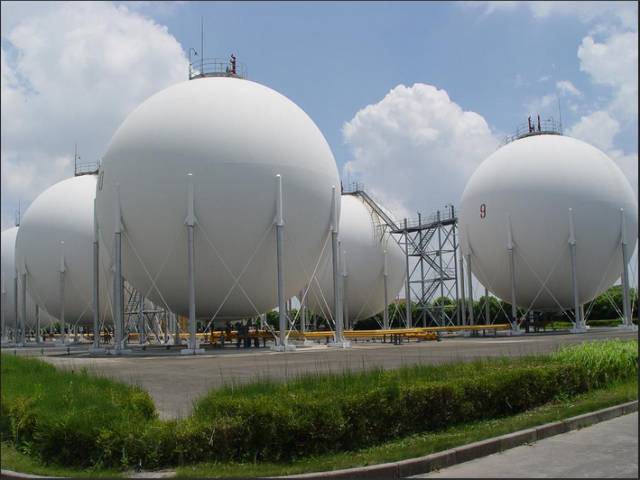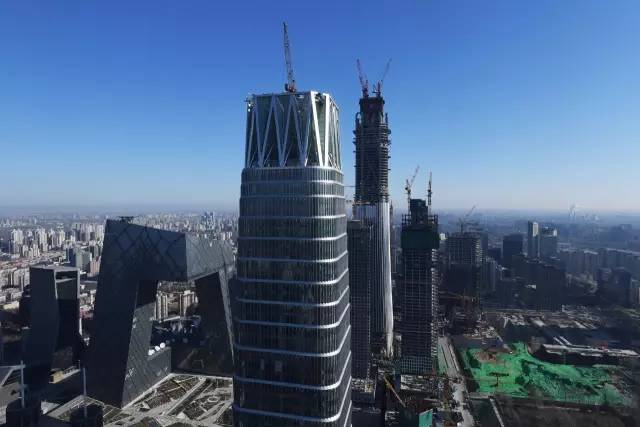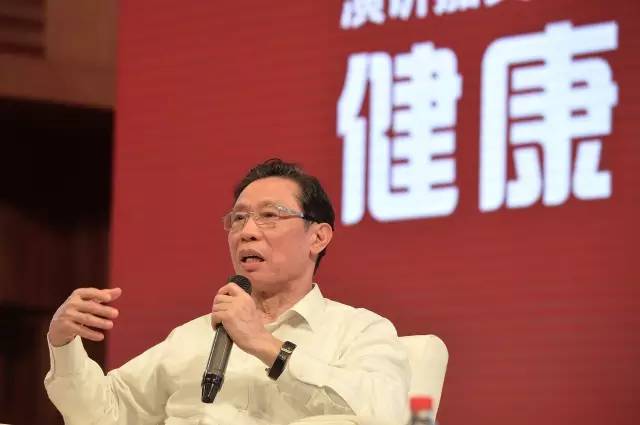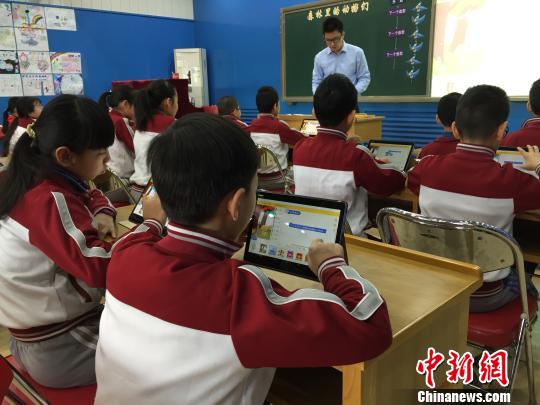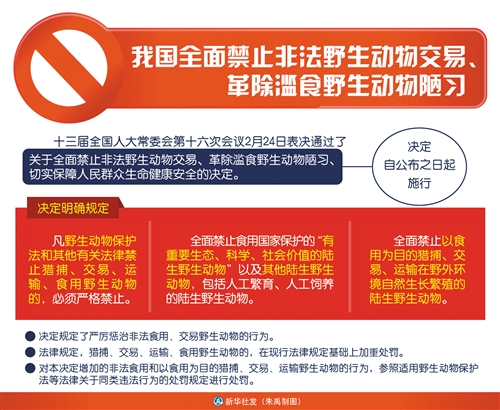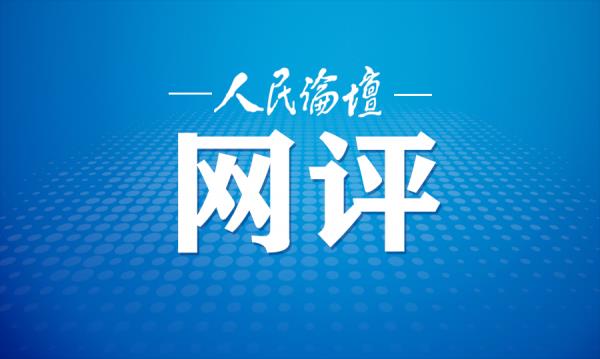Press conference video
At 15: 00 on December 29, 2023, the Information Office of the Provincial Government held a press conference on the Measures for Implementing the Land Administration Law of the People’s Republic of China in Henan Province.
Release content:Introduction and interpretation of the "Implementation in Henan Province"〈the land administration law of the people’s republic of china〉Measures ",and answer questions from reporters.
Published by:
Wang Xinmin Provincial People’s Congress Legal Committee Vice Chairman
Zhang Chuanhui, Chief Planner, Provincial Department of Natural Resources
Director, Economic and Ecological Legislation Division, Justice Department of Li Dake Province
Director, Regulations Division, Department of Natural Resources, Shenhui Province
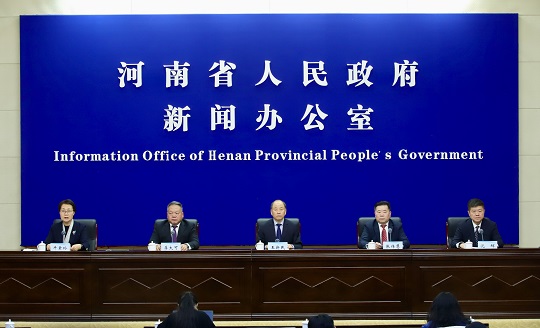
Niu Suling, Second Inspector of Propaganda Department of Provincial Party Committee
Ladies and gentlemen, friends from the press,
Hello everyone! Welcome to the press conference held by the Information Office of Henan Provincial People’s Government.
In order to strengthen land management and promote high-quality economic and social development, the Measures for the Implementation of the Land Management Law of the People’s Republic of China in Henan Province, which was deliberated and adopted at the sixth meeting of the 14th Provincial People’s Congress Standing Committee, will be officially implemented on January 1, 2024. In order to do a good job in the publicity and interpretation of the Implementation Measures and respond to social concerns in a timely manner, we are here today to hold a press conference to introduce the relevant situation of the revision of the Implementation Measures and answer media concerns.
First of all, let me introduce the publisher who attended today’s press conference:
Mr. Wang Xinmin, Vice Chairman of the Legal Committee of the Provincial People’s Congress;
Mr. Zhang Chuanhui, Chief Planner of Provincial Department of Natural Resources;
Mr. Li Dake, Director of Economic and Ecological Legislation Division of Provincial Justice Department;
Mr. Shen Hui, Director of Regulations Department of Provincial Department of Natural Resources.
Now, please let Director Wang Xinmin make the announcement.
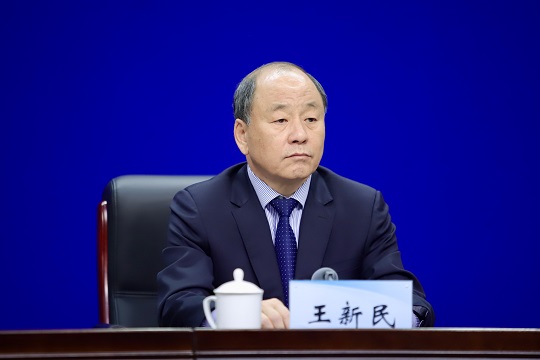
Wang Xinmin, Deputy Director of the Legal Committee of the Provincial People’s Congress
Ladies and gentlemen, friends from the media,
On November 30, 2023, the Sixth Session of the Standing Committee of the 14th Provincial People’s Congress deliberated and adopted the Measures for the Implementation of the Land Administration Law of the People’s Republic of China in Henan Province (hereinafter referred to as the "Implementation Measures"), which will take effect on January 1, 2024. Today, we hold a press conference here to better promote the whole society to seriously study and implement the Implementation Measures. Let me briefly introduce to you the significance, legislative process, guiding ideology and main contents of the revision of the Implementation Measures.
I. Significance of the revision of the Implementation Measures
General Secretary of the Supreme Leader pointed out that the land system is the basic system of the country. The CPC Central Committee, the State Council, the provincial party committee and the provincial government have always attached great importance to land management, and made a series of major reforms and arrangements for deepening rural land reform and strengthening land management. The Land Administration Law of the People’s Republic of China, revised in 2019 and 2021 respectively, and its implementing regulations have been greatly adjusted in terms of land space planning, farmland protection, land expropriation and land use approval. The "Implementation Measures" implemented in our province in 1999 has not adapted to the needs of reform, nor does it conform to the development reality of our province, and it can not effectively link up the superior law. Therefore, in order to implement the spirit of the land reform of the Central Committee and the Provincial Party Committee, and to implement the provisions of the detailed superior law, it is necessary to fix the mature practices in land management in our province in recent years in the form of legislation and comprehensively revise the original "Implementation Measures".
Second, the legislative process
At the beginning of 2023, the Standing Committee of the Provincial People’s Congress included the revision of the Implementation Measures in the deliberation items of the legislative plan. According to the legislative plan, the Provincial Department of Natural Resources is responsible for drafting the "Implementation Measures (Revised Draft)" and conducting system integrity assessment and social stability risk assessment. Afterwards, according to the legislative procedure, the Provincial Department of Justice reviewed and revised the "Implementation Measures (Draft)", solicited the opinions of relevant units and the public, visited Fujian and Jiangxi successively, and investigated in Luoyang and Sanmenxia, and invited relevant experts from the Provincial High Court and Zhengzhou University to participate in the discussion, fully listening to the opinions and suggestions of relevant parties. On May 22, 2023, the seventh executive meeting of the provincial government discussed and adopted the Implementation Measures (Revised Draft), and then submitted it to the Standing Committee of the Provincial People’s Congress, and the Environmental Protection Committee of the Provincial People’s Congress undertook the preliminary examination. In June, Liu Nanchang, deputy director of the Standing Committee of the Provincial People’s Congress, led a team and went to Anyang, Pingdingshan and other cities to conduct field research and solicit opinions. In late July, the fourth meeting of the Standing Committee of the 14th Provincial People’s Congress deliberated the Implementation Measures (Revised Draft) for the first time.
After the first trial, the Legal Affairs Committee organized the Provincial Department of Natural Resources and relevant legislative experts to conduct legislative research in Xuchang City, and studied and revised the Implementation Measures (Revised Draft) one by one according to the deliberation opinions of the members of the Standing Committee; At the same time, comrades familiar with land management business from local natural resources bureau and township grass-roots units are invited to participate in the whole process of research and discussion. After that, the revised "Implementation Measures (Revised Draft)" was sent to relevant provincial units, municipal people’s congress standing committees, grassroots legislative contact points, legislative bases, etc. At the same time, it went to Zhoukou, Hebi, Xinxiang and other places to carry out legislative research, and organized relevant government departments, deputies to the National People’s Congress and grassroots cadres in townships (towns) to hold symposiums to listen to opinions from all sides. In early October, I went to Hebei Province to study and inspect the experience of land legislation. In early November, the Legal Affairs Committee, together with the relevant responsible comrades and legislative experts of the Provincial Department of Justice and the Department of Natural Resources, studied and revised the Implementation Measures (Revised Draft) according to the feedback from all sides.
On November 15th, the Legal Affairs Committee held a plenary meeting to review the Implementation Measures (Revised Draft) one by one, and formed the Implementation Measures (Revised Draft) (reviewed and revised draft); Relevant responsible comrades of the Environmental Protection Committee of the Provincial People’s Congress, the Provincial Department of Justice and the Provincial Department of Natural Resources attended the meeting as nonvoting delegates. On November 20th, the Legal Affairs Committee reported the revision of the Implementation Measures (Revised Draft) to the directors’ meeting, and revised it according to the opinions of the directors’ meeting. The directors’ meeting decided to submit it to the Sixth Standing Committee of the 14th Provincial People’s Congress for deliberation. On November 30th, the Standing Committee deliberated and adopted the Measures for Implementing the Land Management Law of the People’s Republic of China in Henan Province.
Third, the guiding ideology of legislation
In the process of legislation, we have determined the following guiding ideology: First, adhere to the problem orientation, focus on the problems existing in land management in our province, such as irregular land acquisition procedures and unclear responsibilities of homestead management, and link up with the superior law through specific and detailed provisions to enhance the pertinence, applicability and operability of legislation. The second is to serve the national strategy, keep in mind that food security is the "big country", implement the hard measures of farmland protection from the legislative level, strengthen the special protection of permanent basic farmland, and resolutely shoulder the political responsibility of food security. Third, earnestly safeguard farmers’ rights and interests, further refine the procedures of land expropriation, smooth the channels of public participation in land expropriation, safeguard the legitimate rights and interests of landless farmers, meet the reasonable needs of farmers’ homesteads, and realize legislation for the people. The fourth is to implement the strictest system of saving and intensive land use, promote the improvement of land use and management methods through legislation, and move from extensive land use to saving and intensive land use, so as to solve the current problem of prominent contradiction between land supply and demand.
IV. Main contents of the Measures for Implementation
The Implementation Measures consists of eight chapters and seventy-four articles, which are divided into general principles, land spatial planning, farmland protection, agricultural land conversion and expropriation, construction land management, supervision and inspection, legal responsibilities and supplementary provisions. Below, I will briefly introduce the main contents of the "Implementation Measures".
(a) on the land space planning. Focusing on the urgent needs of land management, the "Implementation Measures" set up a chapter on land spatial planning according to the spirit of relevant documents of the Central Committee and the Provincial Party Committee. Article 9 stipulates that people’s governments at all levels shall prepare land spatial planning according to law, and clarifies the legal status and effectiveness of land spatial planning. Articles 10 to 13 make detailed provisions on the principles, subjects, procedures and approval authority of the overall planning, detailed planning and special planning of land and space, highlighting the leading role and rigid constraint role of land and space planning.
(2) On the protection of cultivated land. Our province is a big agricultural province, and it is a major political task to strictly protect the red line of cultivated land and permanent basic farmland and ensure national food security. The "Implementation Measures" thoroughly implemented the spirit of the important instructions of the important speech of the Supreme Leader General Secretary on strengthening farmland protection, adhered to the strictest farmland protection system, strictly adhered to the red line of farmland protection and the bottom line of food security, and provided a strong legal guarantee for farmland protection in our province. First, the balance system of cultivated land occupation and compensation has been clarified, and it is stipulated that people’s governments at all levels should unify all kinds of occupation of cultivated land into the balance management of occupation and compensation, adhere to the principle of making up the occupation, accounting for one, making up for one, and making up for the superior, and improve the quality acceptance system of supplementary cultivated land. Second, the special protection system for permanent basic farmland is stipulated. According to the land management law and the relevant prohibition regulations of the central government, five acts prohibiting the occupation of permanent basic farmland are clarified in Article 20, which further strengthens the strict protection of permanent basic farmland. Third, from the perspective of optimizing and revitalizing land resources, encourage rural land ownership, contracting rights and management rights to be separated and parallel, and promote moderate scale operation of agriculture. In addition, it also stipulates the incentive mechanism for comprehensive land improvement, land reclamation and cultivated land protection.
(3) About land expropriation. The "Implementation Measures" focus on safeguarding the legitimate rights and interests of land-expropriated farmers and compact the responsibilities of the people’s governments at the city and county levels who apply for land acquisition. First, the procedures of land expropriation have been refined, and the procedures such as pre-announcement of land expropriation, investigation of land status, risk assessment of social stability, preparation of land expropriation compensation and resettlement plan, and signing of land expropriation compensation and resettlement agreement have been further clarified. The second is to protect the legitimate rights and interests of rural villagers whose houses are expropriated. It is clear that the rural villagers’ wishes should be respected in accordance with the principle of compensation before relocation and improvement of living conditions, and fair and reasonable compensation should be given by rearranging housing sites, providing resettlement houses or monetary compensation, and the compensation standards and relocation and temporary resettlement fees should be clarified to minimize disputes and disputes in land expropriation and protect the legitimate rights and interests of the people.
(four) on the management of construction land. The "Implementation Measures" adhere to the principle of economical and intensive land use, implement the spirit of "streamline administration, delegate power, strengthen regulation and improve services" reform, and further improve the quality of construction land management and the efficiency of examination and approval. First, the direction of land conservation and intensive use is clarified, and it is stipulated that if construction projects need to use land, priority should be given to the use of existing construction land, new technologies and models for land conservation and intensive use should be encouraged to improve the efficiency of construction land use, and at the same time, local land control standards should be formulated in light of actual conditions. Second, it is clear that the examination and approval of construction projects should be based on the reform requirements of the examination and approval system, and information sharing and parallel examination and approval should be adopted to improve the efficiency of land use examination and approval. The third is to stipulate that the people’s government at the county level should guarantee the demand for land for rural industries and public welfare undertakings according to law, and make it clear that the construction land index should be tilted towards rural development, coordinate urban and rural development, and help rural revitalization. The fourth is to improve the application and approval procedures for rural homesteads and encourage the active use of idle homesteads.
The promulgation of the "Implementation Measures" has solved the problem of having laws to follow, but the vitality and authority of the law lies in implementation. We still have a lot of work to do to put the "Implementation Measures" into practice comprehensively and accurately and really play its role. Land management involves a wide range and has high social concern, which requires the active cooperation and concerted efforts of all levels and departments in the province to form the greatest synergy. It is hoped that all relevant departments involved in the "Implementation Measures" will strictly follow the law and carefully sort out their legal responsibilities, especially to formulate and improve policies and measures that are compatible with the "Implementation Measures", such as the management measures for protected agricultural land, rural production road land, and the minimum compensation standards for ground attachments and young crops. The National People’s Congress will also pay close attention to the effect of the implementation of the Implementation Measures, organize and carry out supervision work such as law enforcement inspection, special inquiry and special investigation in a targeted manner, and follow up the new situations and new problems arising in the implementation of the Implementation Measures. It is hoped that we can innovate publicity methods, broaden publicity channels, expand the awareness and influence of the Implementation Measures, create a good atmosphere for the whole society to care for and support the implementation of the Implementation Measures, and jointly promote the implementation of the Implementation Measures to achieve better results! Thank you!
Niu Suling, Second Inspector of Propaganda Department of Provincial Party Committee
Thank you, Director Wang, for your comprehensive and detailed release! Next, please ask reporters and friends to ask questions about the content of this conference. Please inform your news organization before asking questions.
Top journalist
Land resources are related to the high-quality development of economy and society and the long-term interests of the country. At present, our province has anchored the "two guarantees" and implemented the "ten strategies", and the demand for construction land in various industries continues to be strong, but the contradiction between land supply and demand is still outstanding. Excuse me, how is the work of saving and intensive land use arranged in our province? What are the specific requirements? Thank you.
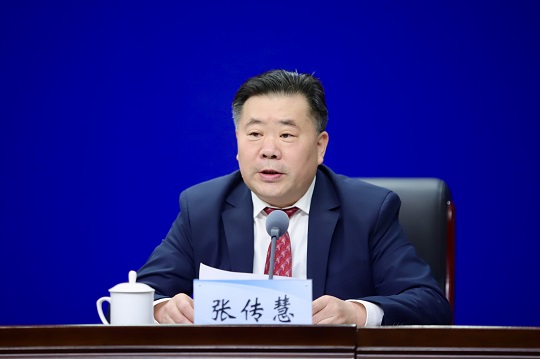
Zhang Chuanhui, Chief Planner of Provincial Department of Natural Resources
Thank you for your question. Since the 18th National Congress of the Communist Party of China, the CPC Central Committee with the Supreme Leader as the core has attached great importance to land management, and the General Secretary of the Supreme Leader has repeatedly given important instructions on saving and intensive land use. Our province is a big economic province, a big population province and a big agricultural province, and there is a serious shortage of cultivated land reserve resources. However, the average GDP per mu of construction land in our province is lower than the national average, and the gap with advanced provinces such as Jiangsu and Zhejiang is even greater. In order to achieve the goal of "two guarantees", promote the practice of Chinese modernization in Henan Province, and make good use of every inch of land economically and intensively is the only way out. The provincial people’s congress, the provincial party committee and the provincial government attach great importance to the implementation of cherishing and rationally utilizing land, implementing the strictest system of economical and intensive land use, and effectively solving the problems of extensive land use and waste. In the Implementation Measures, the level of economical and intensive land use in our province is further improved, and detailed provisions are made in various chapters.
First, the principles are clearly defined in the general rules. Combined with the present situation of land use in our province, in the Implementation Measures, it is clear that people’s governments at all levels should implement the strictest system of economical and intensive land use, insist on framing the total amount, limiting the capacity, revitalizing the stock, improving the quality, carrying out economical and intensive land use activities, strictly implementing the national land use control standards, formulating local land use control standards according to law, and carrying out economical and intensive land use evaluation to improve land use efficiency.
Second, clearly optimize the land spatial pattern. In Article 10, it is clear that the land spatial planning should include the land spatial development and protection pattern and the planning land layout, structure, use control requirements, etc., clear the requirements such as the amount of cultivated land, the scale of construction land, the scope of land reclamation prohibition and the upper limit of water resources utilization, coordinate the land layout of production and living facilities, infrastructure and public facilities, comprehensively utilize the above-ground and underground space, reasonably determine and strictly control the scale of new construction land, improve the level of land conservation and intensive utilization, and ensure the sustainable use of land.
Third, it is stipulated to carry out comprehensive land improvement, which is a platform for exercising all the duties of land use control and ecological protection and restoration, and implementing land spatial planning. In order to give full play to the positive role of comprehensive land improvement, Article 26 of the Implementation Measures stipulates that the county (city, district) and township people’s governments should organize comprehensive land improvement such as agricultural land consolidation, construction land consolidation, unused land development, industrial and mining wasteland left over from history and land reclamation damaged by natural disasters according to the national spatial planning, so as to improve the quality of cultivated land, increase the effective cultivated land area and promote the economical and intensive use of land; And encourage social subjects to participate in comprehensive land improvement according to law.
Fourth, it is important to improve the efficiency of construction land. Article 48 stipulates that if a construction project needs to use land, it should conform to the requirements of national spatial planning, annual land use plan and use control, as well as resource conservation and ecological environment protection, give priority to the use of existing construction land, and encourage the adoption of new technologies and models for economical and intensive land use. By adding the clause of "encouraging the formulation of local land use control standards", the relevant principles of "the design, construction and approval of construction land for construction projects" are made, and measures such as the requirements for conducting a general survey of construction land use are put forward to strengthen the work of saving and intensive land use.
Fifth, it is stipulated that the demand for homestead should be reasonably guaranteed, and the people’s governments at or above the county level should arrange construction land indicators in accordance with state regulations to reasonably guarantee the demand for rural villagers’ homestead. County (city, district), township land space planning and village planning should consider the production and living needs of rural villagers, highlighting the direction of saving and intensive land use. thank you
People’s Daily People’s Daily reporter
It is a major political task to strictly protect the red line of cultivated land and permanent basic farmland and ensure national food security. Please tell us about the measures for the protection of cultivated land and permanent basic farmland in the Implementation Measures. Thank you.
Zhang Chuanhui, Chief Planner of Provincial Department of Natural Resources
Thank you for your question. General Secretary of the Supreme Leader has repeatedly stressed the importance and urgency of farmland protection, and pointed out that it is necessary to hold on to the lifeblood of farmland and resolutely rectify illegal acts of occupying and destroying farmland. In order to thoroughly implement the important instructions of the important speech of the Supreme Leader General Secretary on strengthening farmland protection, the Implementation Measures adhere to the strictest farmland protection system, strictly abide by the red line of farmland protection and the bottom line of food security, and provide a strong legal guarantee for farmland protection in our province.
First, implement the responsibility system for cultivated land protection. In Article 16, people’s governments at all levels are stipulated to take overall responsibility for the protection of cultivated land within their respective administrative areas, implement the tasks of protecting cultivated land and permanent basic farmland clearly defined in the national spatial plan, strengthen the control of cultivated land planting purposes, control the conversion of cultivated land into non-cultivated land, and keep the red line of cultivated land protection and the bottom line of food security to ensure that the total amount of cultivated land and permanent basic farmland within their respective administrative areas will not decrease and the quality will be improved; It also requires the people’s governments at or above the county level to assess the implementation of the target of farmland protection responsibility of the people’s government at the next lower level every year.
The second is to implement the balance system of cultivated land occupation and compensation. According to the actual situation in our province, Article 17 stipulates that the compensation system for occupied cultivated land shall be implemented according to law. People’s governments at all levels shall implement the system of balance between occupation and compensation of cultivated land, unify all kinds of occupation of cultivated land into the management of balance between occupation and compensation, adhere to the principle of making up the occupation, accounting for one supplement, and taking advantage of the advantages and advantages, improve the quality acceptance system of supplementary cultivated land, and implement the compensation system for occupation of cultivated land according to law; If the balance of occupation and compensation cannot be achieved within the county-level administrative area, the cultivated land index can be supplemented by market-oriented cross-regional adjustment.
The third is to clarify the target of cultivated land, further strengthen the control of "non-agricultural" and "non-grain" of cultivated land, and adhere to "equal emphasis on quantity and quality". In Article 18, it is stipulated that people’s governments at all levels should strictly control the conversion of cultivated land into other agricultural land such as woodland, grassland and garden according to the target of cultivated land quantity determined by the people’s government at the next higher level. Where cultivated land is converted into other agricultural land such as forest land, grassland and garden land, we should pay equal attention to quantity and quality, and make up the cultivated land with the same quantity, quality and productivity that can be used stably for a long time in accordance with the regulations.
Fourth, strengthen the special protection of permanent basic farmland. The Implementation Measures implement a special protection system for permanent basic farmland in strict accordance with the superior law and the spirit of the central government. Article 19 stipulates that people’s governments at or above the county level shall organize the demarcation of permanent basic farmland on stable cultivated land according to the protection area index of permanent basic farmland issued by the people’s government at the next higher level, according to the land survey results published according to law and the land statistics published regularly. It is required that permanent basic farmland be implemented in plots and be included in the national permanent basic farmland database for strict management. And in Article 20, it is stipulated that specific behaviors prohibited in permanent basic farmland should be consolidated, the control line of permanent basic farmland should be kept, and the special protection system of permanent basic farmland should be fully implemented. thank you
Henan Legal News reporter
In recent years, the CPC Central Committee and the State Council have made a number of major reforms and arrangements in the field of land management, such as establishing a land spatial planning system and promoting the reform of the separation of rural land ownership, contracting rights and management rights. What specific arrangements have we made to implement the reform and arrangements and strengthen the legal protection of land spatial planning and the separation of powers in rural areas? Thank you.
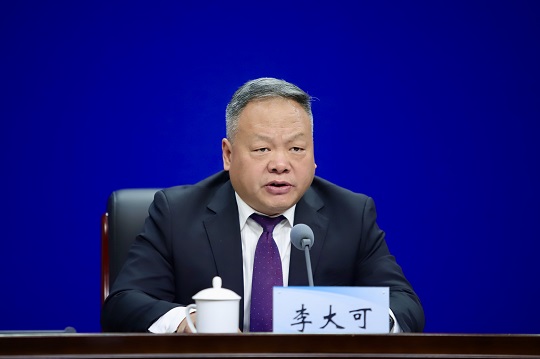
Li Dake, Director of Economic and Ecological Legislation Division of Provincial Justice Department
Thank you for your question. In this legislation, we have carefully studied and understood the reform decisions and arrangements of the CPC Central Committee, the State Council and the provincial party committee in the field of land management. In accordance with the spirit of the Central Committee of the Communist Party of China and the State Council’s Opinions on Establishing a Land Spatial Planning System and Supervising its Implementation, the General Office of the Central Committee of the CPC and the State Council’s General Offices’ Opinions on Improving the Separation of Rural Land Ownership, Contracting Rights and Management Rights, and Henan Provincial Committee of the Communist Party of China and Henan Provincial People’s Government’s Implementation Opinions on Establishing a Land Spatial Planning System and Supervising its Implementation, we should adhere to the connection between legislation and reform decision-making, actively adapt legislation to the needs of reform and development, and combine the reality of our province to strengthen land spatial planning and rural land separation of powers.
The first is to promote the implementation of "multi-regulation". In the past, there were many types of spatial planning, and there was not enough coordination among them, and cross-conflict occurred from time to time. The reform of the national land spatial planning system integrates the main functional area planning, land use planning and urban and rural planning into a national land spatial planning, and promotes the reform of "multi-regulation integration". The revised "Implementation Measures" has a chapter on "Land Spatial Planning". Article 9 clearly stipulates that land spatial planning approved according to law is the basic basis for all kinds of protection, development and construction activities, and no other spatial planning will be established outside the land spatial planning system. Therefore, in the future, the main functional area planning, land use planning and urban and rural planning will no longer be compiled separately, forming a "one map" of the whole province, truly realizing "multi-regulation integration", making the planning more scientific and implementing stricter supervision, which reflects the uniqueness of the national spatial planning.
The second is to clarify the planning requirements. The "Implementation Measures" insist on providing strong spatial planning support for high-quality development with high-level planning. Article 10 stipulates that the preparation of national land spatial planning should adhere to ecological priority, green and sustainable development, implement the requirements for the development and protection of national land space put forward in the national economic and social development plan, scientifically and orderly arrange functional spaces such as agriculture, ecology and towns, and delimit and implement cultivated land and permanent basic farmland, ecological protection red line and urban development boundary. Eleventh combined with the actual situation in our province, further defined the main body, deliberation organ and approval organ of the overall planning of provincial, city and county land space and township land space planning. Article 12 Arrangements are made for the preparation and approval of detailed planning and special planning. At the same time, in order to strengthen coordination and unity, it is also stipulated that special planning shall be organized and prepared by the corresponding competent department, and submitted for approval according to the procedures after the compliance review of the overall land and space planning by the competent department of natural resources at the same level.
The third is to use land in strict accordance with the national land space planning. In order to strengthen the planning authority and ensure the implementation of the plan, Article 13 of the Implementation Measures stipulates that the approved land and space plan shall be strictly implemented and shall not be modified without authorization. At the same time, it is clear that if the land and space plan really needs to be modified, it shall be modified in accordance with legal procedures with the consent of the original examination and approval authority. In addition, the "Implementation Measures" also highlights the implementation and supervision of the land spatial planning. Article 48 stipulates that the use of land for construction projects shall conform to the land spatial planning, and Article 13 requires that the competent natural resources department of the people’s government at or above the county level shall, in conjunction with relevant departments, organize supervision and inspection of the implementation of various control requirements such as control boundaries and binding indicators for the lower-level land spatial planning.
The fourth is to deepen the reform of rural land system. In order to promote the rational use of land resources, optimize the allocation of land resources, improve the land output rate, labor productivity and resource utilization rate, promote the development of modern agriculture, and realize rural revitalization, the Implementation Measures strictly implement the spirit of the central reform and provide a cohesive provision for deepening the rural land system reform according to law. Article 29 makes it clear that the people’s governments at or above the county level and their relevant departments should deepen the reform of rural land system according to law, optimize the allocation of land resources, promote the separation and parallelism of rural land ownership, contracting rights and management rights in accordance with state regulations, implement collective ownership, stabilize farmers’ contracting rights, liberalize land management rights, improve relevant systems to guide and standardize the transfer of land management rights, cultivate new business entities, promote moderate scale operation of agriculture, promote agricultural and rural modernization and promote rural revitalization. thank you
Henan radio and TV reporter
The "Implementation Measures" will be implemented on January 1, 2024. What specific measures will the natural resources department of our province take to implement the "Implementation Measures" in the next step? Thank you.
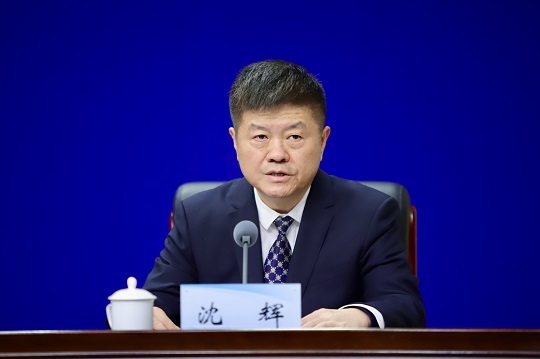
Shen Hui, Director of Regulations Department of Provincial Department of Natural Resources
Thank you for your question. In two days, the "Implementation Measures" will be implemented. Next, our office will implement the "Implementation Measures" from the following aspects.
First, continuously enhance the effectiveness of publicity. Taking publicity activities as an important starting point for deepening the study and implementation of the supreme leader’s thoughts on the rule of law and ecological civilization, and strengthening the creation of a good public opinion atmosphere, we should proceed from reality, strengthen problem orientation, comprehensively consider the specific conditions of regions and audiences, determine the publicity theme and content in a targeted manner, continuously improve the pertinence and appeal of publicity, promote good governance with good laws, and provide strong support for land management.
The second is to continue to promote system construction. In accordance with the provisions of the Implementation Measures, combined with the actual land management work in our province, we will improve the system construction, improve the working mechanism, strictly implement the provisions of the Measures on the expropriation of rural villagers’ houses and the way for the owners and users of land-expropriated land to express their reasonable demands and exercise their legitimate rights, minimize disputes and disputes in land expropriation, and earnestly safeguard the legitimate rights and interests of land-expropriated farmers.
The third is to improve the supporting legal system. In order to solve the growing demand for protected agricultural land, the Implementation Measures clearly stipulates that the site selection of protected agricultural land should not only meet the requirements of cultivated land protection and economical and intensive land use, but also take into account the needs of the people engaged in agricultural production. Measures for the administration of agricultural land for facilities and land for rural production roads shall be formulated by the provincial people’s government. In order to ensure the effective implementation of the Implementation Measures, we will, in accordance with the provisions of the Implementation Measures, jointly with relevant departments, formulate and promulgate in a timely manner the measures for the management of protected agricultural land, land for rural production roads, the measures for the implementation of supplementary cultivated land indicators, the minimum compensation standards for attachments and young crops on collectively owned land, and the specific measures for rural villagers to build houses economically and intensively.
The fourth is to actively implement strict law enforcement. It is necessary to implement the strictest cultivated land protection system, protect cultivated land with hard measures of "long teeth", further strengthen the management of natural resources, standardize administrative law enforcement procedures, strictly implement the administrative law enforcement responsibility system, improve the administrative law enforcement supervision mechanism, implement the responsibilities of various departments, form a joint force, and ensure the correct implementation of the Implementation Measures, so that there are laws to follow, law enforcement must be strict, and offenders will be prosecuted. thank you
Niu Suling, Second Inspector of Propaganda Department of Provincial Party Committee
Thank you for your introduction! That’s all for today’s on-site questions. If you have other concerns, you can contact the publishing unit for an interview after the press conference.
Media friends, the "Implementation Measures" is an important measure for our province to thoroughly implement the spirit of the important instructions of the General Secretary of the Supreme Leader on strengthening the protection of cultivated land and saving intensive land use, and comprehensively promote the high-quality development of natural resources and the construction of the rule of law. Here, I hope that all news media can do a good job in publicity and reporting, deeply interpret the significance and key contents of the Measures for Implementation, effectively enhance the awareness and influence of the Measures for Implementation, vigorously create a good atmosphere for the whole society to care for and support the implementation of the Measures, and jointly promote the implementation of the Measures to achieve better results!
That’s all for this press conference. Thank you! Thank you, journalists and friends! Later, we will also hold a press conference on "Measures for the Administration of Waterway Transportation in Henan Province" here, so please continue to pay attention.





